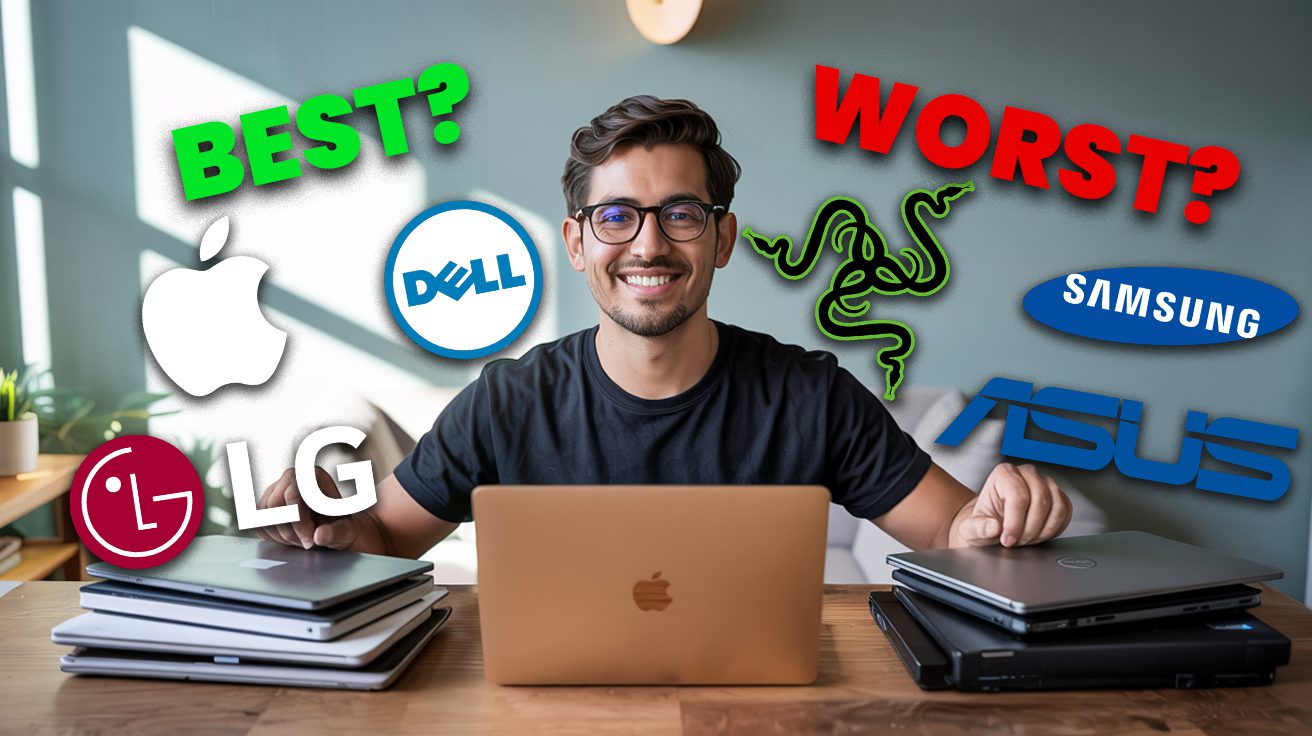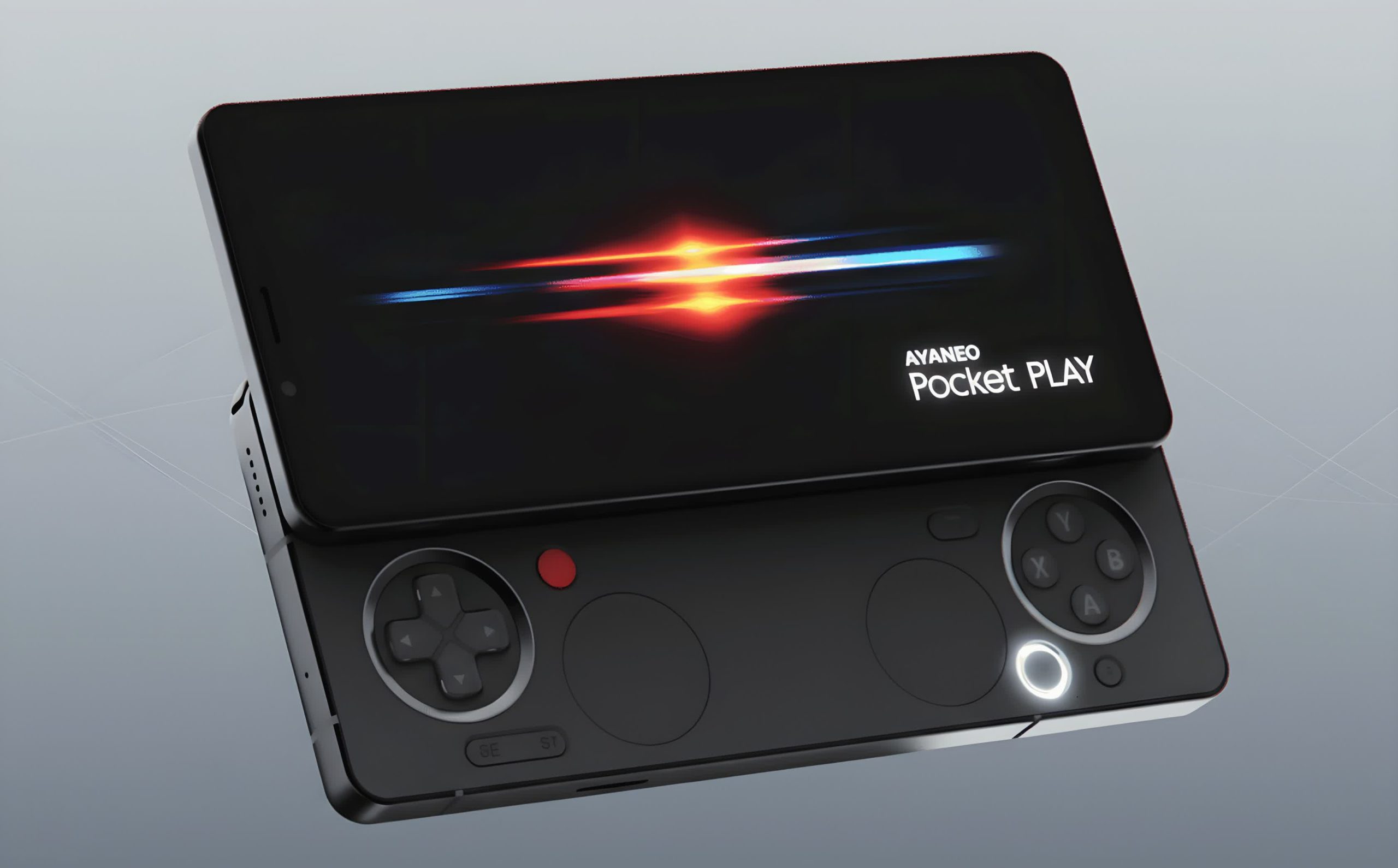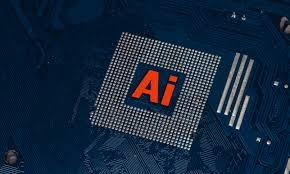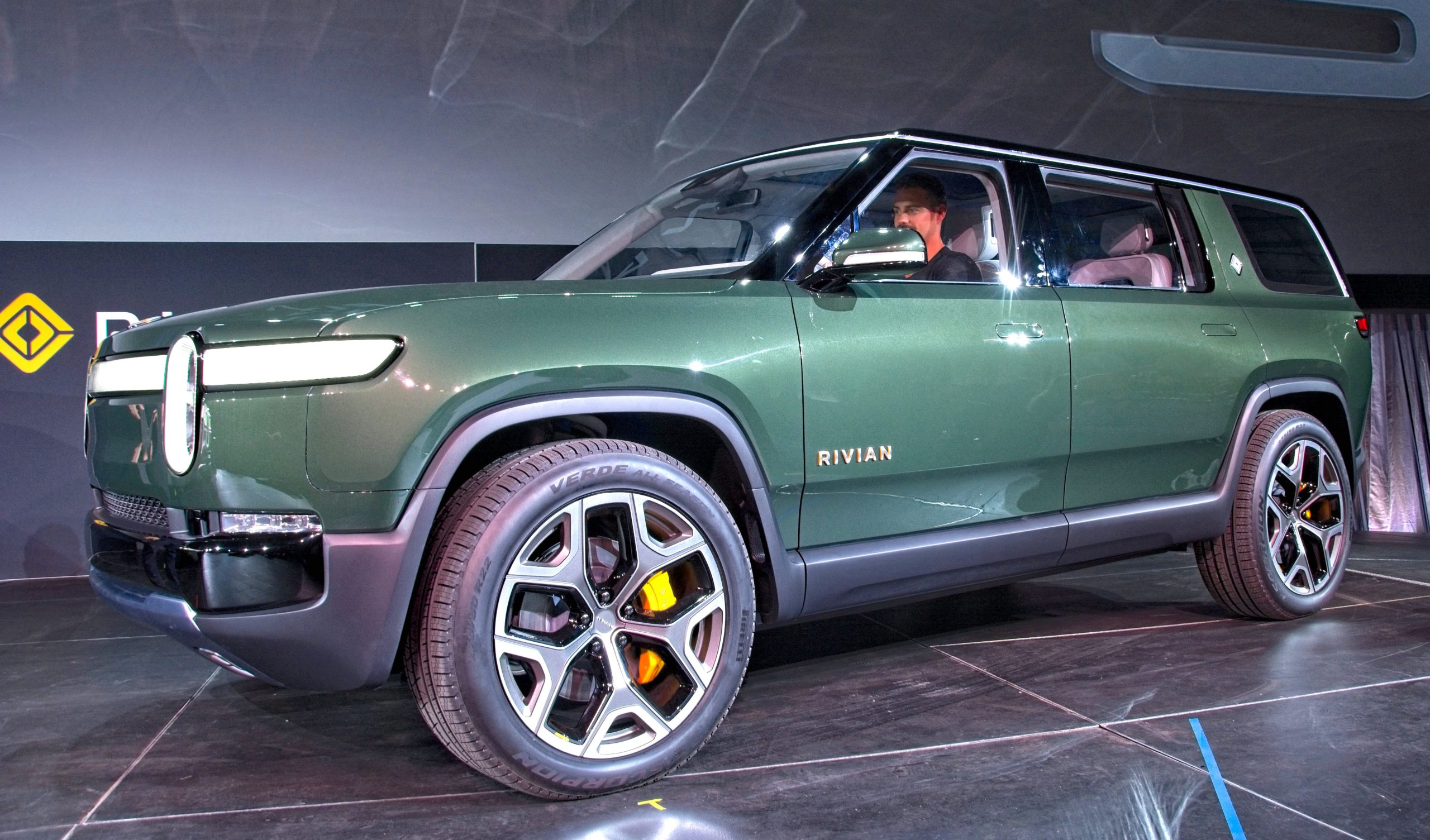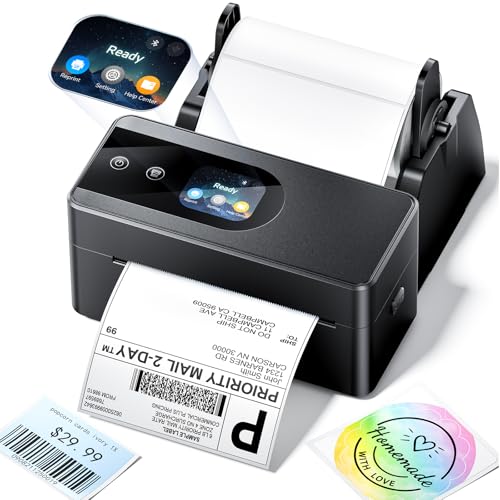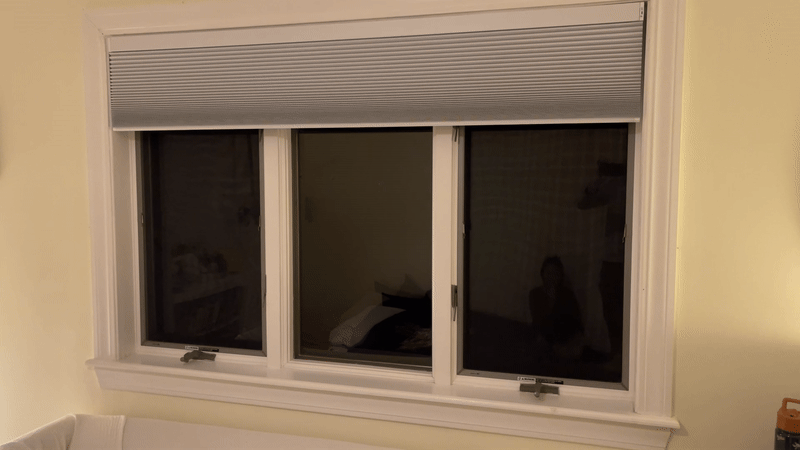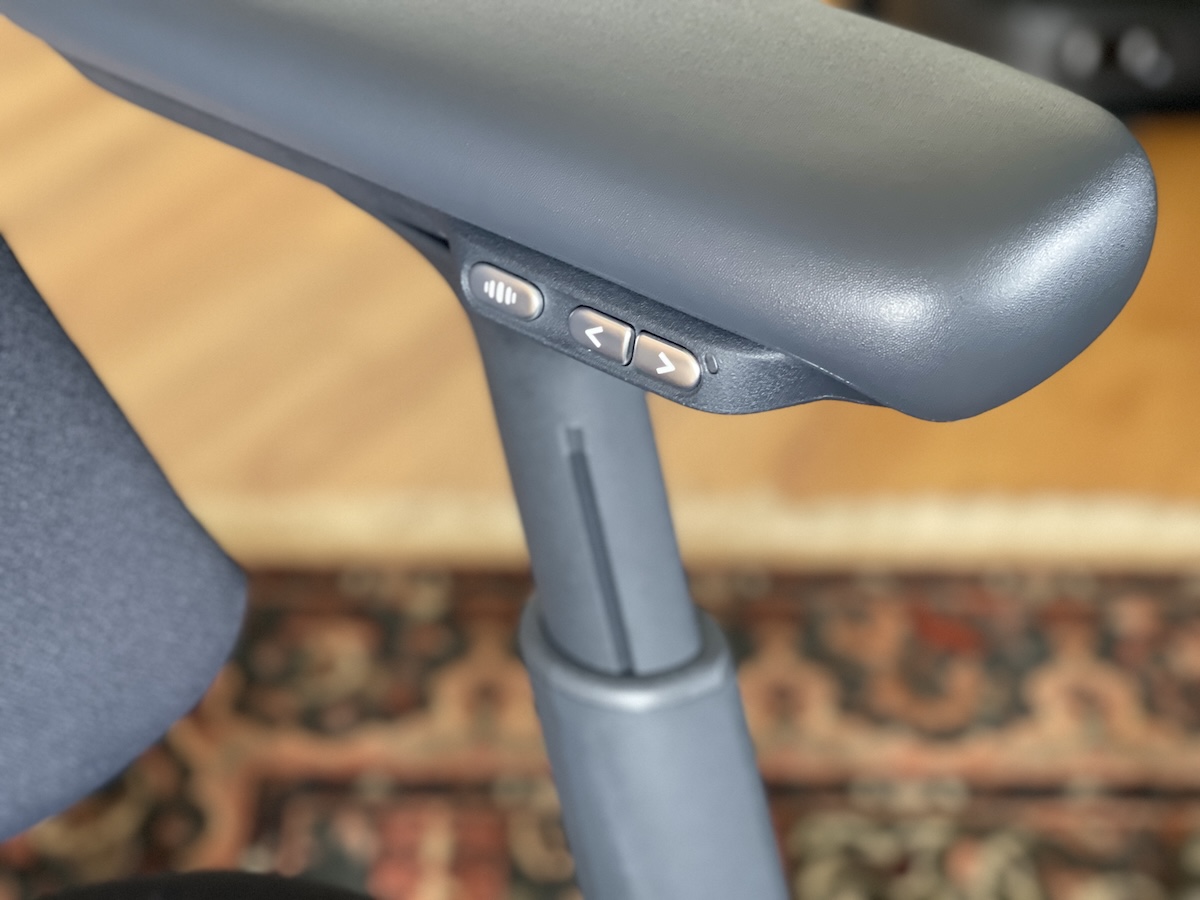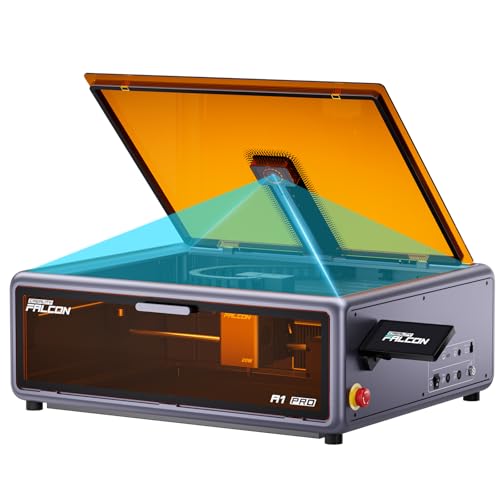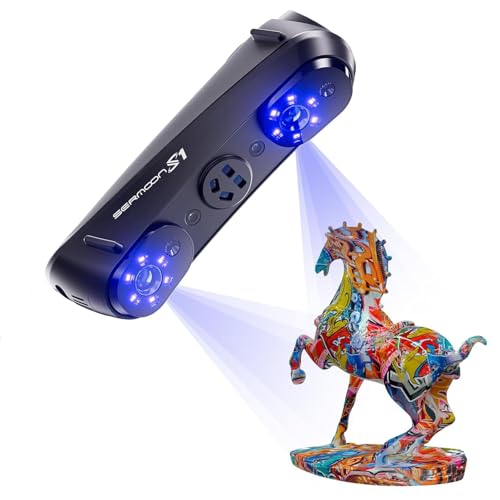Ever tried choosing a laptop and felt similar to Neo facing endless pills in The Matrix? Tech evolves fast and today’s market buzzes with options. Some brands nail design while others crush it on value.
What made a great laptop three years ago barely cuts it now. Each brand brings something unique to the table, with strengths and weaknesses that might make them perfect (or terrible) for your specific needs. We referenced expert reviewers from CNET, RTINGS, and Laptop Mag to create this no-nonsense ranking that breaks down what actually matters: innovation, design, quality, support, and price. Forget what you think you know – this guide might surprise you.
13. Gigabyte (Avoid)

Stuck in laptop purgatory, Gigabyte is not terrible enough to avoid completely, but rarely exciting enough to seek out. Models cost between $700-1,200, offering budget gamers basic performance with average build quality. The cooling systems work about as well as a paper fan in summer, and getting repairs is like sending a letter to Santa – you hope it arrives eventually.
Their Aero creator series occasionally shows promise, and the new AO x16 improves on past mistakes. But Gigabyte mostly follows trends rather than setting them. Best for: budget gamers willing to compromise on quality and support for a decent spec sheet. Just keep your expectations in check.
12. MSI (Avoid)
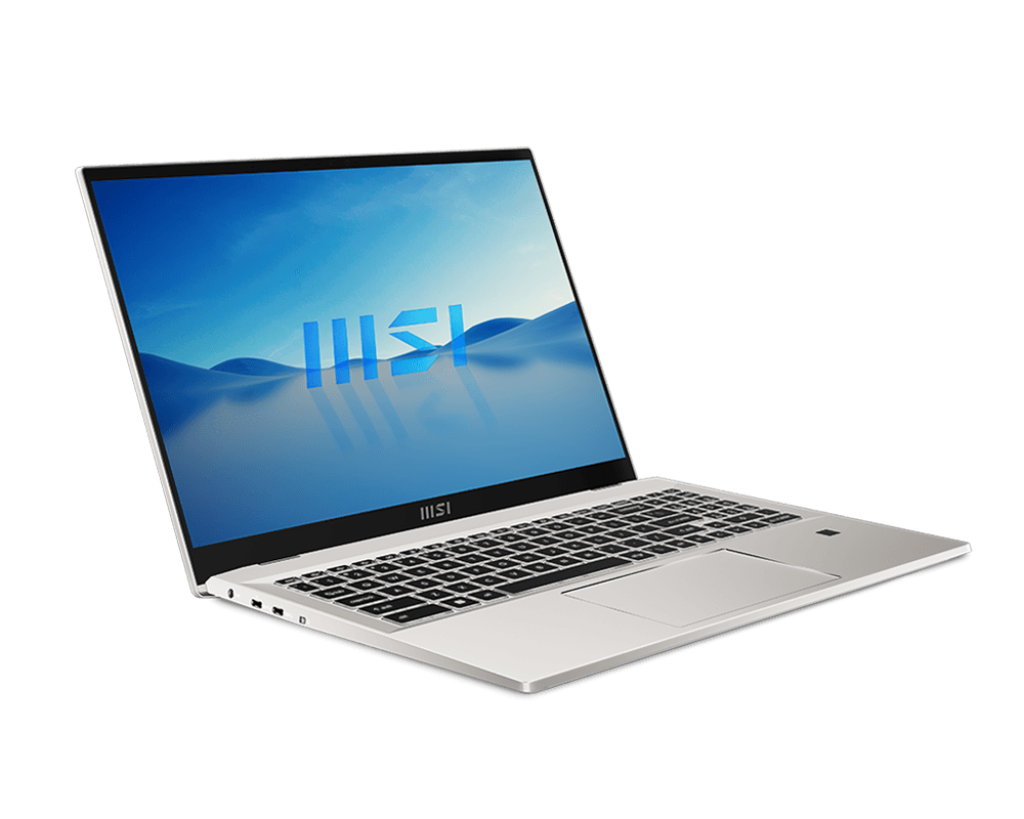
MSI rushes to stuff the latest tech into their machines faster than kids grabbing candy at Halloween. Their Titan 18 boasts four RAM slots when most laptops offer two, and they’re quick to adopt new processors. But using many MSI laptops feels akin to dating someone who looks great online but has zero personality in person – bland design with puzzling keyboard layouts.
Heat management remains MSI’s kryptonite. The Prestige 16 turns hot enough to cook eggs, while their budget Katana screens look washed out and dim. Support centers are as rare as four-leaf clovers. Prices span $800-2,500, attracting performance hunters who care about specs more than comfort or reliability.
11. LG (Avoid)

The biggest draw to LG’s Gram laptops is their barely-there weight. These machines are remarkably light, with the 17-inch model weighing only 3.2 pounds – perfect for the coffee shop nomad. But LG’s once-revolutionary lightness now faces tough competition, with rivals offering similar weight with better build quality.
The minimalist design works for some but bores others. Keyboard flex appears after extended use, making typing feel mushy. Good luck finding support outside South Korea. Prices run $1,000-1,800, which is pretty expensive for anyone who isn’t looking to prioritize portability over performance. Think of them as the summer blockbuster of laptops – entertaining but not particularly deep.
10. Acer (Buyer Beware)

Gaming without burning your wallet defines Acer’s approach. The Predator line ($1,100-2,200) packs serious power, with the Predator 14 stuffing desktop-class graphics into a package smaller than most textbooks. Gaming on these machines is surprisingly satisfying for the price.
The consumer Swift line tells a different story – basic designs with copycat styling and inconsistent quality. Support moves at the speed of a sloth climbing uphill. Still, frequent sales make Acer laptops attractive to students and casual gamers who need performance without premium pricing. Watch out for quality control issues – they’re as common as plot holes in a fast-tracked sequel.
9. Razer (Buyer Beware)

Razer crafts laptops with the precision of a Swiss watchmaker. Their Blade series ($2,000-4,000) combines premium materials, upgradable components, and cutting-edge ports into chassis that could double as modern art. The sleek black design screams luxury, though some might find it too understated – the laptop equivalent of an expensive black t-shirt.
But beauty comes with pain. Thermal issues make these top-tier laptops run hotter than Twitter debates, with fans that spin up louder than a blender crushing ice. Support ranks worse than airline customer service. These machines target creative pros and hardcore gamers who need workstation power in a MacBook-sized package. Your wallet will feel the burn almost as much as your lap will.
8. Samsung (Buyer Beware)

Samsung laptops dazzle with screens that make competitors look like they’re using technology from the last decade. Their Galaxy Book series ($900-1,800) packs AMOLED displays so good they make other laptops look dull and lifeless. The thin design turns heads faster than celebrity gossip, with build quality that feels premium where it counts.
The trackpad and keyboard tell a different story – the 16-inch model’s trackpad has worse palm rejection than an overeager dance partner. Support has improved, with actual service locations appearing in major cities. Frequent 20-30% discounts make these machines surprisingly good value. Perfect for content creators, media consumers, and style-conscious users who need eye-catching displays without Apple’s ecosystem lock-in.
7. HP (Good)

Value-focused HP masters the art of the deal with a strategy that competitors struggle to match. Their laptops deliver shocking value during frequent sales, with the Omni book Ultra models hitting around $1,000 (with premium specs) and the AR 13 dropping to $600. The generic design won’t turn heads, but quality ranks surprisingly good – especially considering the discounts.
Support comes easy with service centers everywhere and quick online help. Tech stays current with fast adoption of new processors. Prices span $400-2,000 depending on model and timing. HP laptops work perfectly for students, office workers, and deal hunters with the patience to wait for sales. The experience will remind you of finding designer clothes at outlet prices – not cutting edge, but solid value that gets the job done.
6. Dell (Good)

Dell laptops are like meeting your high school friend who peaked early – still trading on past glory while struggling to stay relevant. Their experimental features like invisible trackpads and haptic buttons divide users the way pineapple on pizza does. Build quality remains stellar, with premium materials throughout the XPS line, though recent display downgrades raise eyebrows.
Support shines brighter than most, with next-day service available. Prices span from budget-friendly $650 Inspirons to eyewatering $2,800+ XPS and Alienware flagships. The XPS targets professionals seeking Windows alternatives to MacBooks, while Inspirons serve students and casual users. Just prepare for a love-hate relationship with their bold design choices.
5. Framework (Great, but Specialized)

Framework laptops break tech conventions with a refreshing approach to longevity. Their fully modular design lets users replace everything from ports to the motherboard, extending lifespan beyond typical laptops. This approach to repairability scores a perfect 10 for innovation, though the utilitarian design won’t win beauty contests.
Quality cuts corners with single-fan cooling in the 13-inch model and mediocre speakers and webcams. But support stands tall with clear repair guides and responsive service. Prices run $1,000-2,000, seeming steep until you factor in years of upgradability. Framework laptops attract developers, sustainability advocates, and right-to-repair champions willing to trade flashy design for future-proofing.
4. Microsoft (Great, but Specialized)

Microsoft Surface laptops nail the balance between professional and approachable in a way few competitors manage. Their hardware works seamlessly with Windows, creating a cohesive experience that feels intentional rather than cobbled together. The refined design and consistent quality control make them dependable tools for everyday work.
Support rates merely adequate, though the machines rarely need service. Pricing spans $800-1,500 for consumer models, with business versions commanding premium prices. The Snapdragon-powered models frequently go on sale, offering excellent battery life. These laptops serve Windows enthusiasts, business professionals, and creative users who appreciate thoughtful design matched with reliable performance.
3. Asus (Great)

Innovation leaders Asus push laptop innovation with a determination that’s rare in the tech industry. Their early adoption of AMD Strix Halo processors and Intel Luna Lake platforms keeps them ahead of trends. Design sits slightly above average, with distinct touches in premium models that avoid gaming clichés while still looking modern.
Quality-to-price ratio impresses, especially in the Zenbook line ($1,000 or less during sales) and Safaris G4S ($1,000). Support remains their Achilles’ heel – inconsistent and frustrating. These machines attract gamers, content creators, and tech enthusiasts who want cutting-edge features without paying boutique prices. Don’t forget to budget for third-party warranty coverage.
2. Apple (Best, but Expensive)

Apple’s M-series chips changed laptop performance like the iPhone changed phones – completely and irreversibly. Their processors deliver speed and efficiency that make competitors look like they’re running in sand. The iconic design remains instantly recognizable, crafted with materials and attention to detail that justify part of the premium.
Build quality stays consistently excellent with rock-solid construction. Apple Store support offers convenience most Windows brands can’t match. Value continues to improve – Apple has replaced the M3 Air with the new M4 MacBook Air starting at $999. Models range $999-3,500 based on specs. MacBooks excel for creative professionals, ecosystem enthusiasts, and anyone prioritizing battery life and reliability over maximum gaming performance or port variety.
1. Lenovo (Best)

Lenovo builds laptops the way Toyota builds cars – prioritizing reliability over flash. Their ThinkPad keyboards feel better than most desktop keyboards, with the X9’s haptic trackpad rivaling Apple’s precision. Some models feature screens that expand vertically – practical innovation rather than gimmicks. The design won’t win beauty contests but gets the job done.
Quality hits consistently good marks, especially in ThinkPads legendary for surviving drops and spills. Support infrastructure spans globally with business-grade service options. Prices range $500-2,500, with excellent deals during back-to-school and holiday sales. Perfect for business users, serious typists, and anyone who needs a laptop that will still work perfectly three years from now.


